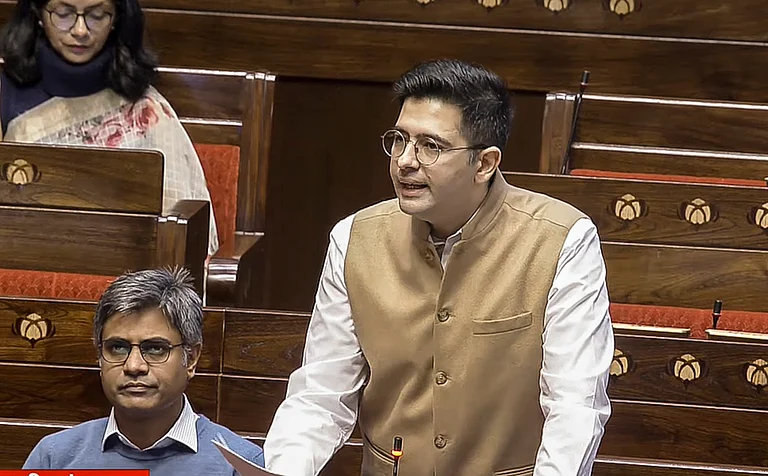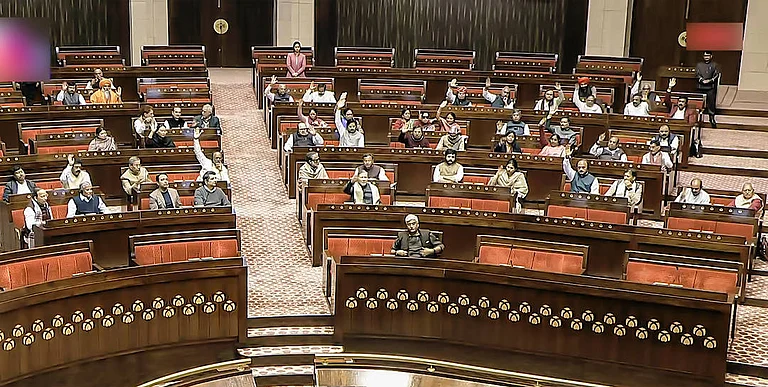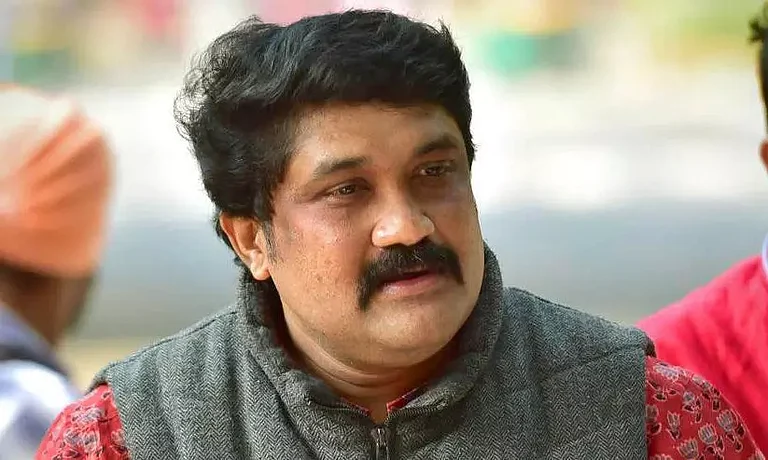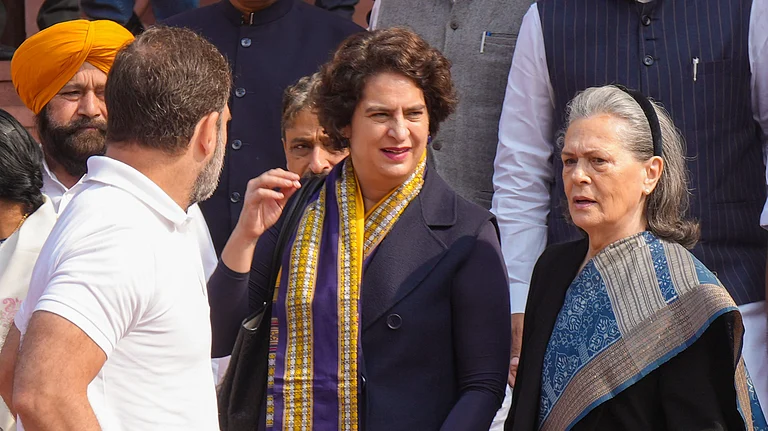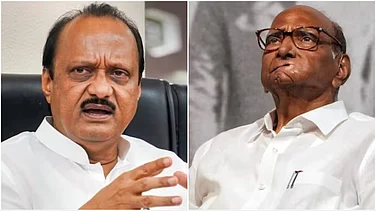It was the 19th century French writer Jean-Baptiste Alphonse Karr who gave us that timeless quote: “The more things change, the more they look the same.” But if he were to land in Lutyens’ Delhi tomorrow, and were to take a contemplative stroll down the Kingsway-turned-Rajpath-turned-Kartavya Path towards Raisina Hills, he might well have whispered unto himself, turning his signature quote on its head: “The more they look the same, the more things have changed”. And indeed, he would find at least one person in the high seat of North Block in agreement: Finance Minister Nirmala Sitharaman.
Sitharaman’s latest Union Budget, which failed to address any of the pressing issues facing the nation — like the massive youth unemployment — gave us the best clue yet that while Modi 3.0 may look and feel like its earlier two versions, a lot has changed. The one key takeaway from an otherwise lacklustre budget was the changing dynamics within the Central government. The government's dependence on coalition partners was unmistakably apparent; with multiple nods to Andhra Pradesh and Bihar, it was evident that the imperatives of coalition politics were increasingly shaping governance in Modi 3.0. But most importantly, for the first time in a decade, Prime Minister Narendra Modi's name surfaced only once in her 58-page budget speech —a striking deviation that did not escape the notice of many, including this author, who wryly applauded the Finance Minister's apparent honesty. In her reply to the budget discussions, Sitharaman quickly tried to patch up this conspicuous omission, taking Modi’s name repeatedly. But the coalition cat was out of the bag.
To put this in context, one has to only recall what happened in the Parliament during the final months of Modi 2.0 when special discussions were called on the Ayodhya Ram temple inauguration. This author had seized the opportunity then to remind the Prime Minister that his duty was to give ‘Pran’ to the people not to the Gods. My statement was in the context of the Centre’s apathy towards Manipur, which was still burning. I had delineated on what Ram meant for those who want an inclusive India and what Ram meant for those using religion to win polls — the Ram of compassion and harmony that Mahatma Gandhi worshipped vs the Nathuram of hatred and division. But I hardly got any support on the floor; understandably so as the prevailing political climate was that of intimidation. But if it happened today, things would be totally different. The opposition has found its mojo, and the treasury benches are painfully aware of the chinks in their armour.
Winds Of Change
That the wind sweeping across Kartavya Path has changed direction is evident from the latest political rabbit that the PM has pulled out of his hat: the civil code. It was not lost on the opposition that the aim of the so-called “Secular Civil Code” was to further polarise society, but the return of that word was a welcome change. The word ‘secular’ had almost became a taboo in the last ten years within and without the Parliament. But BJP is now being forced to embrace it, thanks to the pressures of coalition politics.
The change is so obvious that one doesn’t even need to pore over Parliamentary proceedings. It is in your face. Just look at the body language of the opposition brigade. Even the TV pundits who have taken PhDs in analysing various shades of “56-inch chest” seem to have taken note of the spring in their steps. The opposition leaders are no longer dispirited; they are buoyant and invigorated, exuding newfound confidence. All non-NDA parties, long sidelined and silenced, now display a firm resolve against the government's authoritarian tendencies. The opposition's resurgence has rekindled parliamentary debate. On the other side of the aisle, a palpable sense of complacency seems to have settled over the treasury benches, and the presiding officers in both houses are feeling the heat ever more acutely as the intensity of the opposition's challenge rises.
For the past decade, it was an uphill task for the opposition to secure even a modicum of air time or print space. However, in a poetic twist of fate, it is now the opposition, with figures like Rahul Gandhi at the helm, that commands the spotlight. This shift resonates deeply with L.K. Advani's famed words in the wake of the BJP's 85-seat performance in the 1989 elections: "The winner comes second."
The House As Witness
The anatomy of the recent parliamentary session, coupled with the retreat on the lateral entry issue, manifest the change in narratives. This is a far cry from the days of Modi 2.0, when key legislations, such as the three farm bills, were steamrolled with hubris. One might also recall the passing of the Digital Personal Data Protection Bill amid disruptions and Opposition walkouts over the Manipur issue; or how the three criminal bills and Telecommunications Bills were pushed through while Opposition MPs were suspended en masse. Not to mention the suspension of 146 MPs—100 from the Lok Sabha and 46 from the Rajya Sabha—all from Opposition parties, for the crime of raising slogans and holding placards. We were only demanding a statement from the Home Minister regarding the security breach in the Lok Sabha, where two intruders leaped from the visitors' gallery, using smoke canisters and shouting slogans. Some Rajya Sabha MPs, including this author, were originally suspended for up to three months, exceeding the session's end date—a move that contradicted the Rajya Sabha Rules, which clearly state that a member can be suspended only for the remainder of that session. These MPs were suspended as if they had pioneered this form of protest in parliamentary history. In reality, it was the BJP MPs who perfected this very style of protest during the 2G scam agitations.
Despite its best efforts to drum up popular support for its changes in the Waqf law via friendly media, the government was forced to refer it to a Joint Parliamentary Committee in the last session. If it was a year ago, Modi & Co would have steamrolled it through. This is the change we are witnessing.
Ditto, the recent cancellation of the lateral entry recruitment in the civil services. The letter from Minister of State Dr. Jitendra Singh to the UPSC Chairperson, instructing the cancellation of the lateral entry recruitment process, is adorned with encomiums for PM Modi as a paragon of reservation, equity, and social justice. However, this appears to be little more than a face-saving manoeuvre. Dr. Singh himself had previously informed this author in the Rajya Sabha on July 28, 2022, on behalf of the PM-controlled Ministry of Personnel, Public Grievances, and Pensions, that 37 officers—seven appointed in 2019 and thirty in 2021 through lateral recruitment—were already serving in various ministries and departments, and that reservation policies did not apply to these single-post appointments!. Where was Modi, the social justice messiah, at that time? The latest abrupt reversal by the government underscores the erosion of its unchecked power and despotic authority in today's political landscape.
The Illusion Of Continuity
To mask these inherent weaknesses and the political setbacks of its third term, the government has crafted facades to preserve the illusion of continuity. The retention of ministers from the previous administration, despite rumours of an impending reshuffle, serves as a masterful display of maintaining an image of stability and unbroken authority. Those well-versed in the script within the corridors of power were well aware that many ministers from the Modi 2.0 era were, in reality, on the chopping block.
Beneath the veneer of confidence, a palpable sense of fear has seeped into the Modi 3.0 government, manifesting in a curious blend of belligerence and evasiveness. Once audacious and unyielding— boldly declaring in 2022 that reservation policies did not apply to lateral entry recruitments—the administration has now retreated into a pattern of evasive and incomplete responses. This shift is evident in the noticeable decline in the quality of answers provided in Parliament during Modi 3.0. The government now frequently relies on evasive, incomplete, or perfunctory replies.
This perceptible retreat reveals the government's deep-seated sensitivity to losing power, driving its ostensible belligerence and fragile bravado. The main impetus behind this facade is the desperate need to project strength while masking the ingrained insecurity.
Mahatma Gandhi once said, “First they ignore you, then they laugh at you, then they fight you, then you win.” The Modi dispensation has indeed been traversing this path, and now, the time has come for the government to face the Opposition’s renewed strength. The Opposition is steadfast in its mission to expose the government’s shortcomings against its lofty promises. India’s political landscape is undergoing a profound transformation, and the months ahead will test the government's ability to navigate this new terrain.
In any case, Modi might have now reluctantly concurred with Gandhi's response when a child asked him about democracy. The Mahatma had replied with his toothless smile: “It’s about the winner considering those who ran along with him, because nobody wins by running alone!”.
(John Brittas is a Rajya Sabha member. The views expressed here are personal)







